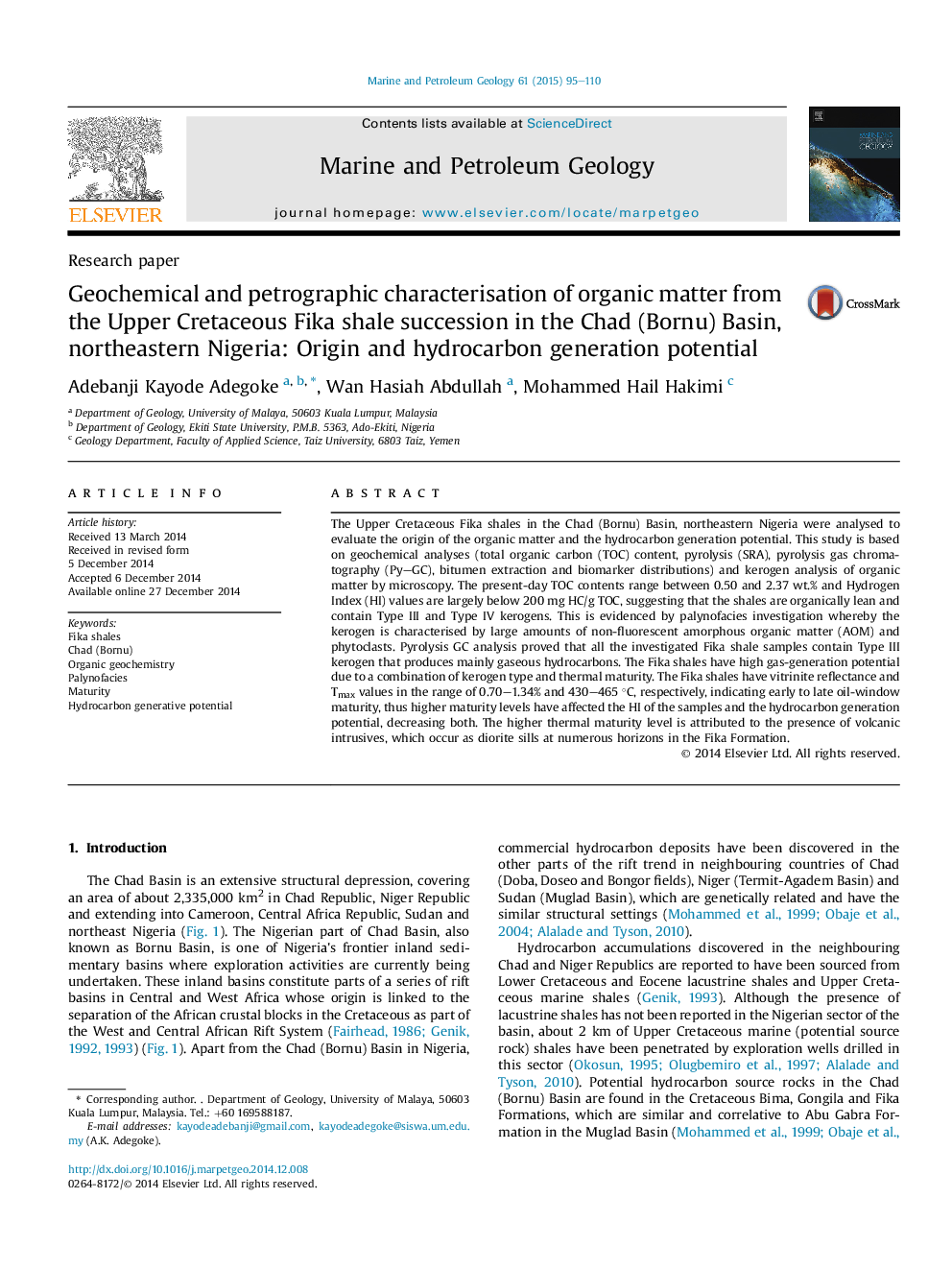| کد مقاله | کد نشریه | سال انتشار | مقاله انگلیسی | نسخه تمام متن |
|---|---|---|---|---|
| 6435189 | 1637164 | 2015 | 16 صفحه PDF | دانلود رایگان |
- Fika shales were deposited under suboxic marine conditions.
- Aquatic and terrigenous organic matter represents the major input.
- The Fika shales are thermally mature and have entered the early-mature to late-mature stage of the oil window.
- The higher maturity is partly attributed to the presence of volcanic intrusives within the Fika Formation.
- The Fika shales have a high gas-generation potential due to a combination of kerogen type and thermal maturity.
The Upper Cretaceous Fika shales in the Chad (Bornu) Basin, northeastern Nigeria were analysed to evaluate the origin of the organic matter and the hydrocarbon generation potential. This study is based on geochemical analyses (total organic carbon (TOC) content, pyrolysis (SRA), pyrolysis gas chromatography (Py-GC), bitumen extraction and biomarker distributions) and kerogen analysis of organic matter by microscopy. The present-day TOC contents range between 0.50 and 2.37 wt.% and Hydrogen Index (HI) values are largely below 200 mg HC/g TOC, suggesting that the shales are organically lean and contain Type III and Type IV kerogens. This is evidenced by palynofacies investigation whereby the kerogen is characterised by large amounts of non-fluorescent amorphous organic matter (AOM) and phytoclasts. Pyrolysis GC analysis proved that all the investigated Fika shale samples contain Type III kerogen that produces mainly gaseous hydrocarbons. The Fika shales have high gas-generation potential due to a combination of kerogen type and thermal maturity. The Fika shales have vitrinite reflectance and Tmax values in the range of 0.70-1.34% and 430-465 °C, respectively, indicating early to late oil-window maturity, thus higher maturity levels have affected the HI of the samples and the hydrocarbon generation potential, decreasing both. The higher thermal maturity level is attributed to the presence of volcanic intrusives, which occur as diorite sills at numerous horizons in the Fika Formation.
Journal: Marine and Petroleum Geology - Volume 61, March 2015, Pages 95-110
